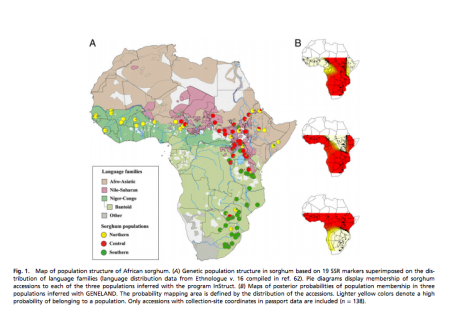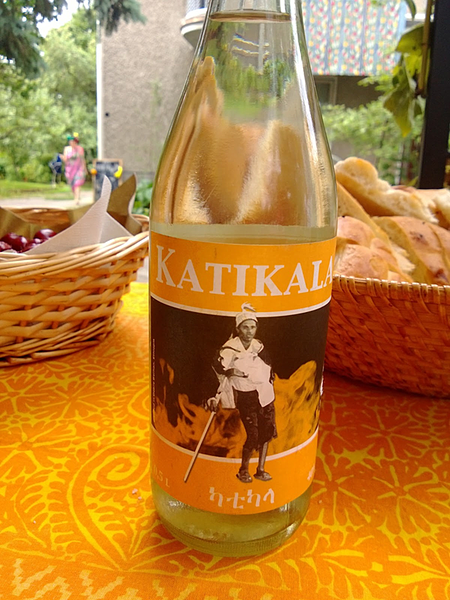- Dynamics and driving forces of agricultural landscapes in Southern Ethiopia – a case study of the Chencha and Arbaminch areas. It’s the population pressure, stupid. No word on what expansion of agriculture and decrease in holding size is doing to agricultural biodiversity. Or wild relatives, for that matter.
- The potential of pale flax as a source of useful genetic variation for cultivated flax revealed through molecular diversity and association analyses. Levels of diversity similar in wild and cultivated, but strong differentiation between the two.
- Microsatellite analysis of genetic relationships between wild and cultivated melons in Northwest and Central China. For the true wild melons, go to the NW. Others may be escapes and introgressions.
- Evaluation of cauliflower genebank accessions under organic and conventional cultivation in Southern Germany. Genotype performance differs depending on cultivation method. But if you want to breed specifically for organic conditions, here’s what to use.
- Mission and Modern Citrus Species Diversity of Baja California Peninsula Oases. Lots of unique types in the mission oases and surrounding ranches. For how long? Well, here’s the baseline. I’d like to know about the agritourism potential.
- Evaluation of mungbean genotypes for salt tolerance at early seedling growth stage. From the Indian core collection. Some good stuff found.
- Implementing the dynamic conservation of elm genetic resources in Europe: case studies and perspectives. Genebanks are not enough. But then again, nobody ever said they were.
- Future distributions of Fusarium oxysporum f. spp. in European, Middle Eastern and North African agricultural regions under climate change. Some countries are in big trouble.
- Use of wheat genetic resources to develop biofortified wheat with enhanced grain zinc and iron concentrations and desirable processing quality. CIMMYT has used a range of wild species to increase the Zn and Fe content of high-yielding, high-quality bread wheat lines.
- Expressing the public value of plant genetic resources by organising novel relationships: The contribution of selected participatory plant breeding and market-based arrangements. PPB can help smallholders manage the indirect and option value of agrobiodiversity, but it needs new types of property rights and networked governance. Whatever that is, it can take a variety of forms. All this from China, of all places.
On sorghums and cultures
Our friend Dr Ola Westengen just sent us this post on a paper that he’s just had published. Keep it up, Ola, and thanks.
In a new study published in PNAS this week we stand on the shoulders of Jack R. Harlan et al. and take a molecular approach to test some interesting hypotheses on the factors shaping diversity in sorghum. In the book Origins of African Plant Domestication, from 1976, Harlan and Stemler summarized findings from their Crop Evolution Laboratory at Illinois University and proposed that the five basic “races” of sorghum identified were associated with language distribution in Africa: “Guinea is a sorghum of the Niger-Congo family, kafir a Bantu sorghum. Durra follows the Afro-Asian family fairly closely, and caudatum seems to be associated with the Chari-Nile family of languages” (p. 476). This kind of crop-language co-distribution would be in support of the contested farming-language co-dispersal hypothesis (by Diamond and Bellwood). Genetic studies have hitherto not directly explored the molecular support for this sorghum-language co-distribution hypothesis — maybe because such studies have found “little correspondence between races and marker-based groups” (Billot et al.).
We let go of the race concept and based on molecular markers we modelled the population structure in a panel of 200 ICRISAT accessions with a broad geographic origin. We identified a pattern that is in strong support of the notion that sorghum diversity and ethnolinguistic groups are associated in Africa. We identified three major sorghum populations: a Central population co-distributed with the Nilo-Saharan language family; a Southern population co-distributed with the Bantu languages; and a Northern population distributed across northern Niger-Congo and Afro-Asiatic language family areas.

A case study of the seed system of the Pari people, a group descending from the proposed first Nilo-Saharan sorghum cultivators, living in today’s South Sudan, provides a window into the social and cultural factors involved in generating and maintaining the pattern seen at the continental scale. We show that the age-grade system, a cultural institution important for the expansive success of this group in the past, governs the traditional sorghum seed system in a way that maintains the Pari sorghum landraces as a metapopulation. Thus, we can make Harlan and Stemler’s words as ours: “It has been our observation that the races of sorghum are intimately associated with the cultivators who grow them.”
So Harlan et al. are our main references, but how did we start thinking along these ethnolinguistic lines in the first place? Well, like many others in the community we regularly read this excellent blog.
Baobab booze, anyone?
An even more modest suggestion to stop plundering other cultures for kicks
Sure, vodka is nice, but why not use your indigenous culture’s recipe for hard liquor?

Image borrowed from here.
Featured: Tef lunacy
Bill W. thinks that Ethiopian farmers should derive some benefit from taking care of tef for all these millennia:
I must admit that I don’t know anything about the quinoa trade, but it seems counter-intuitive that I am supposed to be relieved that the farmers who grew tef until the rest of the world noticed it will not benefit economically from their stewardship. It’s a crazy world.
And if you’re into plant breeding, do visit his site.
